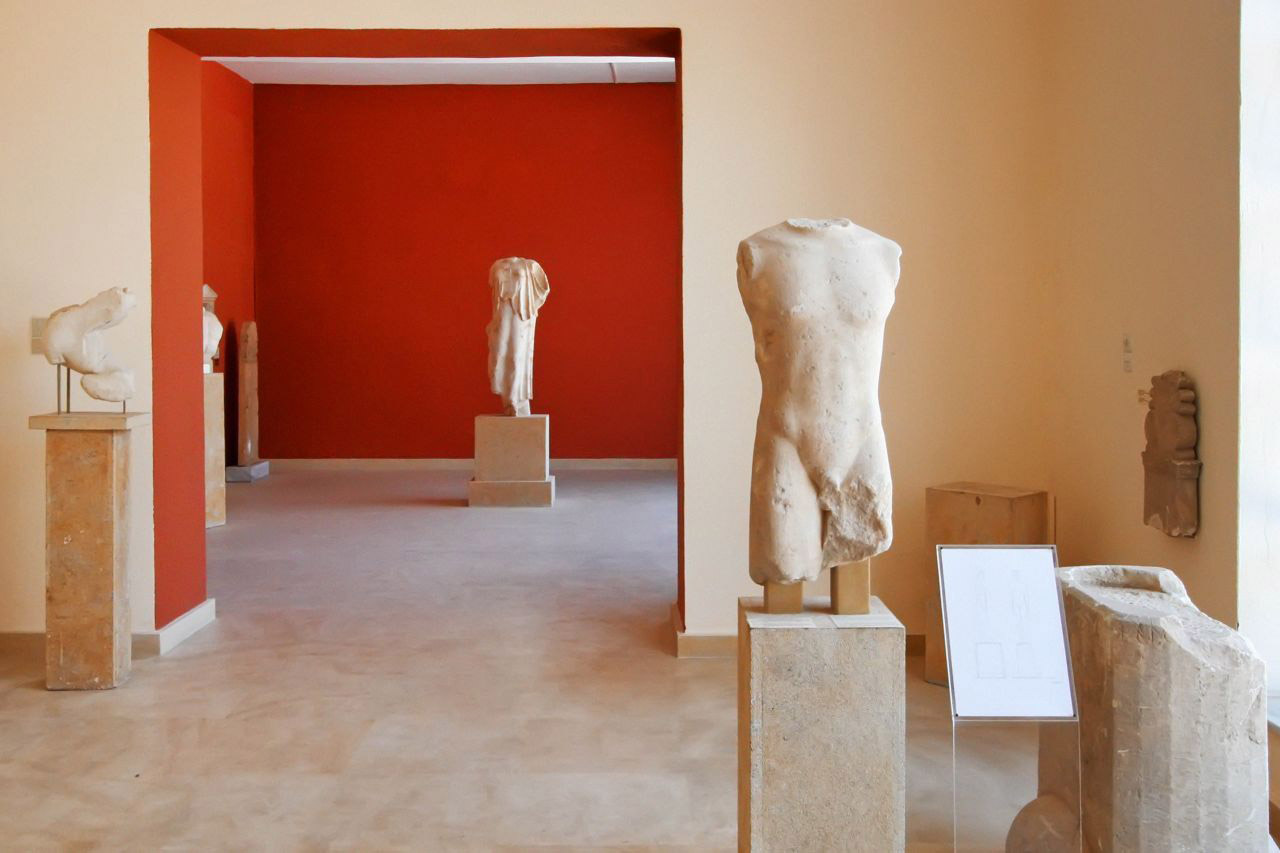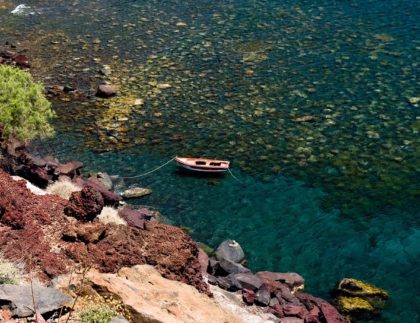
Pride and joy of Parikiá is the enormous Byzantine church and cruciform baptistry (5th–6th century; locked but look through the grating) of Ekatondapylianí (The Hundred Gated; daily all day), the name probably a corruption of Katopolianí (At/Of the Lower Town). The compound also contains a small Byzantine Museum (daily 9am-9pm), whose highlight is the chance to climb the stairs up to an ambulatory which provides views into the apse with its very early frescoes depicting scenes from the Virgin's life, only revealed during the 1960s.The “upper” town, settled early in the Bronze Age, is on and around the seafront Kástro, where much later the Venetians liberally recycled Classical masonry for their fortifications. The old market lanes nearby amply reward strolling, being less congested than vaguely comparable Mýkonos town.
Artefacts of various ancient Parian settlements are showcased in the archeological museum (Tues–Sun 9am–3.45pm) just behind Ekatondapylianí. Not least because of all the handy marble quarries, sculpture was assiduously practiced here from the Archaic through the Roman periods; standout items include a memorial to Classical-era poet Arhilohos in the form of a lion savaging a bull, a winged Archaic gorgon, and a fine Artemis from ancient Delion, across the bay from Parikiá.
Parian marble was in fact considered among the finest in the ancient world, and later pipped only by Carraran stone. Marble was last extracted here during the 19th century for Napoleon’s tomb; you can still view the quarries near Maráthi village (though the tunnel mouths are fenced off) and pocket a souvenir chip.
The closest retreat from the bustle of Parikiá town, up on the hillside immediately east (you can drive up), is the splendid eyrie-monastery of Ágii Anárgyri, founded in 1660. The last monk left in 2000, but a caretaker will let you in (10am–2pm & 5–9pm). Bring a bottle to collect tasty water at the subterranean agíasma (holy spring) dated to 1779. From the shady festival terrace, a cool retreat in summer, there are knockout views west (best early or at sunset) over the distinctly heart-shaped bay to Sífnos, Sérifos and Kýthnos.
All that said, the most impressive single local site is on Páros’ satellite islet, Antíparos. Here the great cave (daily 10am–6pm summer, 10am–3pm spring/autumn, shut Nov–May, €5), known since ancient times (Arhilohos made the first recorded tour) rarely fails to impress, despite cement walkways with railings, and a cheesy, constant bilingual recorded narration. Only the topmost galleries with their stalagmites and stalactites, 45 million years in the making, are accessible. Surely the most eccentric visitor was the Marquis de Nointel, French ambassador to the Ottomans, who in 1673 celebrated Christmas Eve Mass deep within the cavern for a mixed Muslim-Christian party of 500, using a suitably table-like rock for an altar.







